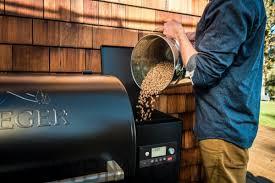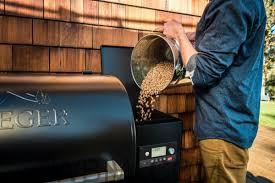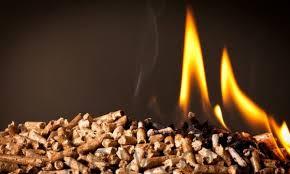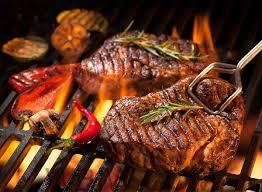
BLOOMINGTON – It’s outdoor grilling season again, and Indiana University researchers Agnieszka Drobniak and Maria Mastalerz, working with their Polish collaborators, have found that the quality of wood pellets that many uses to grill food are very important to ensure the safety of the users.

As the popularity of healthy food and outdoor cooking grows, so does the global barbecue grill market; estimated at $4.79 billion in 2018, it is expected to grow to $8.43 billion in 2021 and reach $10.38 billion in 2025 (Market analysis Report, 2019; The Business Research Company, 2021).

Customers can now choose from a wide selection of grilling appliances and purchase an extensive assortment of grilling fuels, as their manufacturers constantly create new products to compete in the marketplace. Currently, about 64% of people in the United States and 72% in Canada own a grill or smoker, and these numbers are on the rise (HPBA, 2020).
According to the Hearth, Patio, and Barbecue Association in the United States (HPBA), wood pellet grilling is one of the hottest trends in the grilling industry. For the last several years, the vast majority of wood pellets was produced for industrial and residential heating, but in recent years consumers can also purchase wood pellets (BBQ pellets) that are marketed specifically for grilling.

Until 2008 there were only two manufacturers of wood pellet grills in the United States; today there are more than 20, and approximately 300,000 wood pellet grill units were sold in the United States in 2018. Wood pellet grills currently account for 3% of grills used in the USA, but their popularity is expected to increase.
Rising wood pellet production and grill sales are a response to a novel cooking option – wood pellet grilling – that has the versatility and benefits of a convection oven, from grilling to smoking, roasting, and even baking. The grills are also easy to operate and provide convenient and precise heat control with a knob regulator or even via a smartphone.
The wood pellets are loaded in a hopper, a storage container attached to the side of the grill, and automatically fed into a cooking chamber by an electric auger. As the pellets ignite, the intake fans bring in air, and the heat and smoke are dispersed throughout the cooking chamber. When the desired cooking program is chosen, the grill sustains the set temperature, burning the wood pellets at a rate of about 225 to 1,300 grams (0.5–2.5 lb) per hour, depending on grill setting and weather conditions. Consumers can choose from a wide range of wood pellets that allow countless options to customize the desired food flavor profile. However, as the use of wood pellets increases, so do questions and concerns about how to assure their quality. The properties of grilling fuels should be of critical importance because the smoke from their combustion directly contacts the food and impacts both human safety and the environment.
Smoke from wood pellet combustion has direct contact with food and may pollute the atmosphere around the grill. Researchers investigated the quality of grilling wood pellets and chips available on the market, analyzing their properties as well as their combustion gases, and determining if a relationship between the fuel composition and emissions of gases and particulate matter during grilling could be established.

Wood pellets sold as grilling fuel come in a wide variety of flavors and bag sizes, allowing consumers countless options to choose the desired food flavor. According to the producers, grilling wood pellets are made only from 100% hardwood and hardwood byproducts, typically using wood from apple, cherry, mesquite, hickory, pecan, oak, alder, and maple trees or their blends. During production, the dried wood is ground into sawdust and then pressurized at high heat to create compact pellets held together by the wood’s natural lignin.
Researchers looked at 45 types of BBQ wood pellets and wood chips available in the United States and Europe. While most were composed largely of biomass, undesirable components like bark, mineral matter, charcoal, coke, metal, rust, slag, and petroleum products were also mixed in, many in elevated amounts.
The quality check of grilling wood pellets should be of critical importance as smoke from their combustion has a direct contact with food, impacts human safety, and pollutes the atmosphere.
The study’s data show that grilling with contaminated wood pellets and chips leads to elevated emissions of particulate matter and formaldehyde, in comparison with recommended exposure limits.
While some wood pellets are labeled specifically as grilling fuels, in many instances (depending upon their properties) any high-quality wood pellets can be used as fuel for grilling. In some cases, though, heating and grilling pellets should not be used interchangeably. For instance, some softwoods found in heating pellets (e.g., cedar, pine, fir, spruce) are not suitable for grilling and smoking. Due to high levels of resin and oils, they burn too fast, give off a lot of smoke, and release dangerous substances during combustion.
Researchers found that the levels of emissions changed during the grilling cycle, depending on the type of combusted wood, grilling conditions, and fuel moisture content.
As grilling increases in popularity, the researchers suggest checking for quality ingredients in wood pellets and wood chips to protect human health and the environment.

As a general rule, wood pellets of poor quality should never be used, especially as grilling fuels. Some uncertified pellets were found to contain various levels of contamination, these impurities (e.g., paint or glue from furniture scraps) can not only ruin the flavor of the food but also be dangerous to human health. As very little information is publicly available about the production and properties of grilling pellets, it is difficult to distinguish marketing strategies from various subjective opinions and limited scientific data.
Results from the grilling test document significant emission variations, with particulate matter (especially PM2.5) being of major concern. Although the experiment shows that emissions vary with the amounts of impurities and wood type of the original fuel and grilling temperature, more studies are required to identify all factors controlling emissions. Considering the increasing popularity of grilling, identification of these factors, serving as predictors of emissions, is very important both from environmental and human health viewpoints.
Information: Indiana University Research Impact



